-
Title (Dublin Core)
-
The Consolidated B-24 Bomber "Liberator"
-
Article Title and/or Image Caption (Dublin Core)
-
Title: The Liberator
-
Subtitle: Our Consolidated B-24 bomber carries a promise of deliverance to the world
-
extracted text (Extract Text)
-
WHEN , Winston Churchill flew from
England to French Morocco for his
historic meeting with President Roosevelt
at Casablanca, he used a Consolidated Lib-
erator—the same plane, with the same .
American pilot, which had carried him to
Moscow for his conference with Stalin. The
fact is significant, for this long-range, high-
altitude precision bomber has come to mean
just what its name implies—a symbol of lib-
eration for the oppressed peoples of Europe
and of all other parts of the world where
the Axis has set its heel.
Who gave the Army’s B-24 her name may
never be known. Two years ago, Major
Reuben Fleet, then president of Consolidated
Aircraft Corporation,
wrote the Navy De-
partment saying that
here was a ship that
‘would liberate the world
from tyranny. Some
time later, an uniden-
tified Britisher dubbed
her “Miss Liberator.”
No one, not even her
makers at the Consoli-
dated plant in Califor-
nia, where she was
born, is proud of her
appearance. She looks
fat and awkward in-
deed, and sits squat on
an airfield, with husky
.50 caliber machine
guns sticking like pin-
feathers from her nose,
belly, back, sides, and tail. But don’t let her
seeming clumsiness fool you. She's one of
the deadliest and most devastating weapons
ever created by the hand of man; with that
quality her builders—and, more important,
the men who fly her—are tremendously sat-
isfied, for she carries a heavier bomb load
than any other ship of her class.
Sitting on a field, the Liberator bids for
confidence. You can't see all the features
that make her a much-feared aerial battle-
ship. She rests on three wheels as the en-
gines bark into action, when she rolls away
with a throaty roar for a 120-m.p.h. take-
off. Turbo-superchargers help carry her to
great heights, and with two engines shot
away she can maneuver normally. She's
more heavily armed than the Flying For-
tress, America’s first
gift to precision day-
light bombing.
The Liberator is as
truly tailor-made as the
finest suit in your
wardrobe. She rolls off
the Consolidated as-
sembly lines ready to
fly. But she can’t go
to the pilots in Libya
or the Aleutians or the
Solomons until her en-
gineer-tailors have
fitted her for the pre-
cise job and conditions
she will face.
If she’s bound for
cold country, shutters
must be installed on
the oil radiators, spe-
cial preservatives applied to the engines,
lighter oils and hydraulic fuels poured into
her tanks. For desert duty, special filters
are installed to keep sand out of her in-
duction and fuel systems. These modifica-
tions are made at several depots, and when
they're completed, the Liberator is ready
for the firing line.
During a brief battle career this four-
engine monster already has proved her dead-
ly efficiency. The British first used her to
stalk submarines. They equipped her with
depth bombs, and in a matter of weeks sank a
large number of German subs in the Bay of
Biscay alone. Almost before the camouflage
dried on her rounded belly, every Englishman
was convinced she was in truth a Liberator.
Improved Liberators began to reach
American battle lines in mid-1942. Almost
overnight, great stories of their hard-hitting
accuracy with bombs of all sizes began
clicking across the cables and radio. Bombs
from Liberators rained on Roumanian oil
fields last June. That was a pasting heard
around the world, for it announced that
Uncle Sam was about ready to tackle Eu-
rope with daylight raids, sending over in-
creasing numbers of precision bombardiers.
Soon the Liberators’ attacks increased in
both the Far and the Near East.
You'll have to skip around the map a bit
to follow their trail of destruction. Libera-
tors helped punish the Japs at Attu, Agattu,
and Kiska, stemming a northern advance
that might have doomed Alaska and threat-
ened the American mainland. Working
with Lockheed P-38 Lightnings, the Lib-
erators made sweep after sweep over Kis-
ka, sinking Japanese transports, destroyers,
and cruisers; wrecking important military
installations; kindling large fires and spread-
ing terror among the little brown enemy.
Punching holes in enemy installations and
ships from six miles up became common-
place.
Meanwhile, American airmen riding high
in Liberators swooped across Libya and be-
gan slugging Axis shipping in Suda Bay,
Crete. Other squadrons started dogging
Rommel, unloading hot cargoes on Tobruk,
strafing shipping with their bombs and ma-
chine guns, and making deadly passes at
German and Italian tanks. One returned to
its base carrying 200 bullet holes, but was
still flying and fighting when the enemy dis-
appeared.
In a matter of days, Liberators bombed
three Italian cruisers in the harbor at Py-
los, Greece; joined the Russian air force at
Sevastopol; smashed at Bengasi; laid more
than 50,000 pounds of steel eggs in a second
slap at Suda Bay; roared over France to
attack Lille, Saint Nazaire, and La Palisse;
smashed installations at Hong Kong; raided
the Linshi coal mines in China. Now they
are hitting at the Axis in Tunisia, delivering
supplies and fighting men to distant Allied
Pacific bases, striking the enemy wherever
he can be found.
Hitler never will forget that Lille affair.
It was on October 9, 1942, when 115 Libera-
tors and Fortresses made a tight-formation
attack. Five hundred fighters accompanied
them part way, then swung aside to shoot
up several airdromes, hoping to lure Ger-
man fighters away from the main attack.
The bombers smashed a plant engaged in
building 150 main-line locomotives a year,
downed 48 Focke-Wulf and Messerschmitt
fighters, damaged and probably destroyed
59 others. American losses? Two Libera-
tors, two Fortresses.
Though her guns are deadly, her wing is
the real secret of the Liberator’s success in
waging long-range aerial warfare. We've
got to go back a bit for that story.
In the fall of '38, the Air Corps, scanning
the coming clouds of war, wheedled from
Congress an appropriation
to raise our force of mili-
tary planes from 2,500 to
10,000. Of these only 100
were to be big bombers.
Lieut. Gen. H. H. Arnold,
Chief of the Air Forces, or-
dered 100 Fortresses, the
only big fellows then avail-
able, and induced Boeing
and Consolidated to make
them, one by Consolidated
for every two by Boeing.
Then the Federal lawmak-
ers whacked the appropria-
tion in half, Boeing got
the order, and Consolidated
sat out in the cold.
But Arnold had a substi-
tute plan ready. He called
Edgar N. Gott, Consoli-
dated vice-president, and asked, “Can you
fellows turn out a long-range land bomber,
and how soon?” “We can deliver a bomber
in nine months,” Gott answered promptly.
All he had to rely upon for the promise was
Consolidated’s experience in building the
Model 31 long-range twin-engine flying
boat. Bombers those days could scarcely
clip off 1,200 miles. Gott knew he'd have
to turn out one capable of reaching Ireland
or Hawaii, in order to meet the demands of
the changing pace of air war.
Nine months and 10 acres of blueprints
slipped by, and the B-24 arrived. Would
she deliver, as the Army demanded, 307
miles an hour top speed, reach a 30,000-
foot ceiling, cruise at 220 m.p.h. three miles
up, and maintain a three-mile altitude with
two engines out? Could she cruise 3,000
miles without refueling ?
Her slick aluminum skin shone brightly
in the California sunshine, her tail arched
gracefully from her plump belly, her wings
stuck out stiff and stark. She was slightly
on the heavy side, but on that warm Cali-
fornia morning she flew gracefully, and that
instant was recorded a series of firsts which
marked her an airplane to be reckoned with.
For the Liberator was the first heavy plane
to use tricycle landing gear, first to em-
ploy Hamilton hydromatic quick-feathering
three-blade propellers, one of the first to use
Model R-1830 1,200-hp. Pratt & Whitney
radial engines.
Not much was left of Model 31 when the
first Liberator flew, except for the all-im-
portant item of the wing. As for weight,
she originally was scheduled to tip the scales
for a gross weight of 39,000 pounds. Short-
ly this was upped by a large amount.
You've got to look closely at that wing
for the main reason why Miss Liberator not
only flies farther and faster than other
heavy bombers, but also can lift heavier
loads than her predecessors. David R.
Davis gave Miss Liberator her wing. Davis,
once partner of Donald Douglas, upset all
previous theories of wing design when he
sold Major Fleet on an idea he promised
would give him a swifter bomber than man
had yet conceived.
To know about wings, you've got to un-
derstand that the efficiency of a wing de-
pends upon its silhouette and its airfoil,
airfoil meaning a cross section which shows
the curvature of its surfaces. Precisely the
form taken by the Davis wing can't be told
in a few sentences. Nothing less than a
complex formula would convey the idea,
even to an aeronautical engineer.
Nubbin of the idea, though, is this: Davis
theorized that, contrary to the accepted
thought, a wing has a positive action as it
moves through the air, and its seemingly
passive action is due to the fact it is held
passive by the plane's controls. From this
he concluded that, were a wing not held
passive, it would revolve like a wheel
around a hub. He reasoned further that a
wheel, properly modified, could be applied to
airfoil design.” His wing, then, can be con-
sidered a modified circle, which may be
varied to carry heavier loads, fly faster, or
perform whatever mission it may be called
upon to fulfill,
Davis’ wing was submitted to the Cali-
fornia Institute of Technology wind tunnel,
and to their amazement the scientists found
that it tested, not 90 percent efficient, which
had been about the best for any other air-
foil, but hit the unbelievable figure of 100
percent! They could scarcely believe their
own calculations, and almost tore the tun-
nel down in an effort to learn whether their
structure had contributed to an erroneous
total. But the figure stood, and when it was
applied to the Model 31 flying boat, the boat
took off like a land plane after an almost
incredibly short run.
Exactly what that wing might contribute
to America’s war effort was not immediate-
ly apparent, because we were not at war
and were not building big bombers in large
numbers. In December, 1939, though, the
nation got a preview of earth-jarring events
to come, when the first B-24 was launched.
To engineers, that ship promised great
things in the field of long-range flying and
bombing enemy bases a long way from our
bases with fairly heavy loads of deadly ex-
plosives.
Here you've got to consider another set
of facts about airplanes to understand why
Consolidated engineers were and still are
jubilant. Because we're coming to a new
era of even larger bombers, we'll talk in big
terms. Most planes, remember, carry a use-
ful load about equal to their own weight. A
bomber weighing 40,000 pounds ordinarily
will carry 40,000 pounds of bombs, fuel, per-
sonnel, and equipment. Now, if the wing's
efficiency can be increased 20 percent,
which just about represents the Davis
wing's superiority over others, that ship will
pick up a 40-percent heavier load, or an ad-
ditional eight tons. Because the Davis
wing has been found especially good as a
load-lifter, we can justifiably look forward
to Liberators' big brothers some day carry-
ing bomb loads far heavier than we've en-
visioned in the past—and carrying them
right into the heart of Germany and Japan.
The Liberator line is a dogged breed, as
one would expect from a warplane that has
proved its valor by great deeds. One is re-
ported by the British to have flown 745,000
miles—30 times around the world—during
the past year. An adaptation, the C-87,
flew 2,200 miles from Newfoundland to
England in 400 minutes, spanning the At-
lantic at 330 miles an hour. Another C-87
flew Wendell Willkie from London to Mos-
cow to Cairo. General Arnold flew in a
| C-87 from Australia to San Francisco in
35 hours, 53 minutes, establishing a world’s
record for that long over-water flight.
| The C-87, called the “Express Liberator,”
is a cargo and personnel carrier. Except
for a few changes, it is the B-24. Bomb
bays have been removed and windows in-
stalled. A new nose replaces the bombar-
dier's plastic windows. Obstructions have
been taken out and doors cut in her sides.
Though a land plane, she's been flying
scheduled ocean runs since last August,
hurrying officers, ammunition, and repair
parts to advanced bases. She's helping the
B-24 perform her important job. The quali-
ties that make her so useful are the same
ones that fit her bomber sister to be the
Liberator in fact as well as in name,
-
Contributor (Dublin Core)
-
Andrew R. Boone (Article Writer)
-
Language (Dublin Core)
-
eng
-
Date Issued (Dublin Core)
-
1943-05
-
pages (Bibliographic Ontology)
-
86-91, 210, 212
-
Rights (Dublin Core)
-
Public Domain (Google Digitized)
-
Archived by (Dublin Core)
-
Matteo Ridolfi
-
Marco Bortolami (editor)
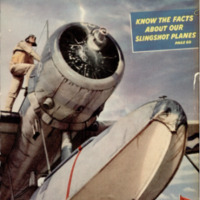 Popular Science Monthly, v. 142, n. 5, 1943
Popular Science Monthly, v. 142, n. 5, 1943
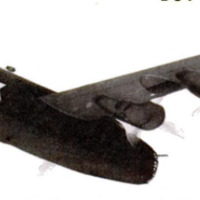 Schermata 2022-02-24 alle 16.02.03.png
Schermata 2022-02-24 alle 16.02.03.png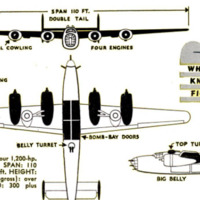 Schermata 2022-02-24 alle 16.02.10.png
Schermata 2022-02-24 alle 16.02.10.png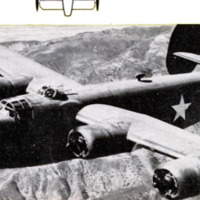 Schermata 2022-02-24 alle 16.02.16.png
Schermata 2022-02-24 alle 16.02.16.png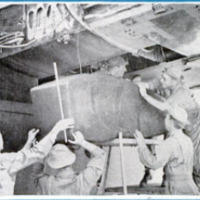 Schermata 2022-02-24 alle 16.02.26.png
Schermata 2022-02-24 alle 16.02.26.png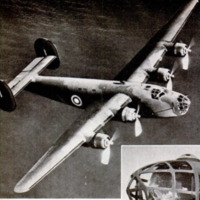 Schermata 2022-02-24 alle 16.02.32.png
Schermata 2022-02-24 alle 16.02.32.png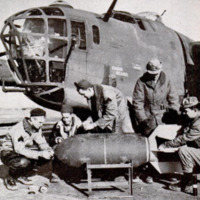 Schermata 2022-02-24 alle 16.02.37.png
Schermata 2022-02-24 alle 16.02.37.png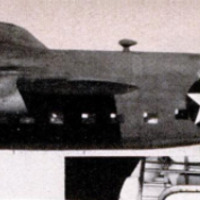 Schermata 2022-02-24 alle 16.02.44.png
Schermata 2022-02-24 alle 16.02.44.png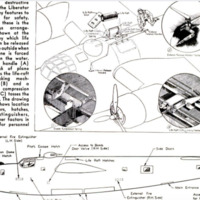 Schermata 2022-02-24 alle 16.02.53.png
Schermata 2022-02-24 alle 16.02.53.png







